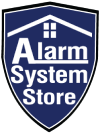
27 Mar 2018
- 9 Comment(s)
This past winter caused a record cold snap in the US and other parts of the world in December. According to the National Oceanic and Atmospheric Administration, 2017 was the second-hottest year on record for the US; only 2012 and 2016 were hotter. Clearly, temperature control is going to be a bigger deal for most households, and they’ll be looking at their thermostats a lot more. That includes ones from Honeywell, a leading provider of home technology products.
But Honeywell thermostats are designed with state-of-the-art climate-control functions, so the average homeowner may not completely understand how everything works. Maybe when you go to adjust the temperature, you’ll press a button by mistake and trigger an unfamiliar message or signal. Maybe you see the screen blinking even before you touch it. Or you may find that it’s not on at all. If you see any of these strange and unfamiliar symptoms, don’t panic and call the repairman just yet. Chances are, what you’re looking at is not a critical situation for your system.
Basic Functions and Scheduling Modes

Photo courtesy of webandi via Pixabay
Before we move forward, a quick review of the functions of a programmable thermostat will be useful. A basic thermostat allows users to control the temperature and air flow within their house or room. By communicating with the house’s heating and cooling systems, a thermostat can set the house to the levels of heat and cold that suit them.
Programmable thermostats take that function to the next level. Because they have an internal clock, users can pre-program a specific temperature cycle for it to follow throughout the day. That involves setting temperatures according to, at most, four schedules:
- Wake – for when people wake up in the morning, which is typically 6 AM by default
- Leave – for when people are away from the house, whether they’re at school or at work
- Return – for when people just come back home
- Sleep – for when people want get their forty winks, which is usually 10 PM by default
A typical Honeywell product will likely show which of these schedules it is following at any given moment. And not only does it let users like you program it for a day; depending on the model, you’ll also be able to set a program for an entire week. Based on that function, there are four basic categories of programmable thermostats:
- 1-week programming – only one temperature cycle will be followed throughout the week
- 5+2 – you can set a heating/cooling cycle that would apply from Monday to Friday, and one cycle that would apply throughout the weekend
- 5+1+1 – same as 5+2, except you can set different temperature cycles for Saturday and Sunday
- 7 – arguably the best type, it lets you program a different cycle for each day of the week
“Hold” Your Horses

Photo courtesy of Stocksnap via Pixabay
Now you may be wondering: “If I suddenly break my routine for the day, can I change the temperature setting from what the pre-programmed schedule says?” Ask an HVAC repairman or contractor and they’re likely say that you can “override” the system. Some people are intimidated by that word, but don’t stress out; it’s just the professionals’ way of saying: Yes, you can have it your way.
When you adjust the temperature on a thermostat with pre-programmed temperature cycles, you may see different statuses pop up. For example, a person who’s just overridden the programmed schedule may ask “Why does my Honeywell thermostat say Hold?” Again, that’s no cause for concern; it’s just the system saying that the temperature you’ve just set it at will be followed indefinitely, regardless of what pre-set schedule it’s supposed to be following.
But you may not want to do something so drastic. For example, let’s say you have it pre-set at 60 degrees during a “Leave” schedule — when people are away — but you come home earlier than usual. In that case, you may want to reset it to a more comfortable level, but only until it’s time for the system to follow the pre-set “Return” schedule. In that case, you’ll just have to set the temperature, and then press the key under “Hold” to activate the “Temporary Hold” feature. Again, depending on what model Honeywell thermostat you’re using, the steps you should take may vary. For example, the latest programmable thermostat Honeywell, the Honeywell ZStat Z-Wave Thermostat, lets users choose between a temporary hold and a permanent hold setting.
How Your System Avoids Shocks

Photo courtesy of intographics via Pixabay
Imagine there’s a blackout, and the house gets uncomfortably hot. As soon as the power comes back on, everyone is eager to get cool again. You try to set the thermostat to a much lower temperature, but your Honeywell thermostat says “Wait” and doesn’t seem to be activating the cooling system. No reason to fear here; what you’re seeing is the thermostat’s so-called “compressor protection” feature.
To put it very simply, cooling systems are designed to be robust, but even the most durable systems break down over time because of wear and tear. In the case of air conditioners, this can occur to the compressor, particularly if it has to deal with sudden changes in electrical current, temperature, and pressure regularly. To prevent this from happening, Honeywell thermostats may provide a five-minute delay immediately after the compressor shuts down, giving it time to “rest” before it’s reactivated. (Note: if the “Wait” message appears for longer than five minutes, you may have get a professional to check it out.)
Occasionally, you may notice another feature that minimizes the load on the heating or cooling system, and that’s the “Recovery” mode. Some users may program a drastic temperature change between two consecutive schedules — “Leave” and “Return,” for example. Rather than making the change upon hitting the “Return” phase, the thermostat will make the system gradually work toward the pre-set “Return” temperature even before the “Leave” schedule has ended. The more gradual the transition, the less stressful it will be for your home management system.
Some Real Problems (That Aren’t Actually So Bad)

Photo courtesy of RobinHiggins via Pixabay
If you see your Honeywell thermostat blinking, that’s a legitimate cause for concern — but not as much as you’d think. Nine times out of ten, that just means you have to replace the battery, which shouldn’t require much more than a new coin cell, a screwdriver, and a few minutes of your time. A blank thermostat usually means you’ve got a totally drained battery that you have to replace immediately or, in case your thermostat isn’t battery powered, a problem with the circuit breaker.
You may also get worried when your Honeywell thermostat clicks every time it turns on or off. That’s probably the relay making and breaking contact with the thermostat — a totally normal function, although it shouldn’t be audible. Maybe you’ve got particularly sensitive hearing, but it could also be related to how or where it’s mounted. If the securing screws are too tight, or if the wall it was affixed to is hollow, that can amplify the sound. Fitting rubber washers between the thermostat and the wall is usually a quick and easy fix for the problem.
As temperature changes get more extreme, it’s more important than ever to have full control of the climate within your home. Having a little more understanding of your Honeywell thermostat will help you set your home’s temperature to comfortable and healthy levels with confidence. Of course, this troubleshooting guide doesn’t cover every issue. But with ingenuity and a grasp of how thermostats work, you can avoid spending big bucks.


Comments
Nancy Boyle
Our Honeywell Thermostat turns on to set temp for 6 am at 4:30 in the am. This makes it too hot upstairs in our bedroom. I have tried resetting and now we have just been putting it on 60 and hold overnight until we get up. Kind of defeats the purpose of the programming, could you suggest something to override that.
Thank you,
Nancy Boyle
Thomas Cocchiola
I have a multi color wifi thermostat. Last night my house got very hot in the morning the inside temp read 86° but the thermostat was calling for 70° and the heat was still pumping out. I turned the thermostat off thinking I had a problem with my boiler. When I came home the house was 86° and the heat was still pumping out I looked on the thermostat and there was no heat setting only cool. I reprogrammed the thermostat with the correct settings for my forced hot air system and my heat program times returned and it is running normal. Is what happen a default setting if the system has a glitch or is my thermostat on it’s way out?
Karen Meyers
My Honeywell thermostat says it is set to 68 but that the temperature in the house is 71. This seems impossible since it is 33 outside and it feels more like 65 in here. What is going on?
Joan Clemmons
My new Honeywell thermostat cannot be overridden to increase/decrease the “set” temperature. Instead, there is a flashing “leave” lower left corner and the temperature does not adjust to the needs of the time. What am I doing wrong?
Hollie Wilkes
My Honeywell thermostat display panel is blank?
Alex
Trying to turn on heat but the word “OFF” keeps blinking. What’s that mean?
Marilyn Lyons
My Honeywell digital thermostat occasionally shows a red-orange light on the right side that reads “53” on it. What does this warning mean?
Sharon Thompson
My Honeywell programmable thermostat shows a house with a 3 inside and little people standing outside the house. My air conditioner is on but not cooling house. What does the house symbol with the 3 mean.
renee benza
My thermostat says LL. What’s that mean?